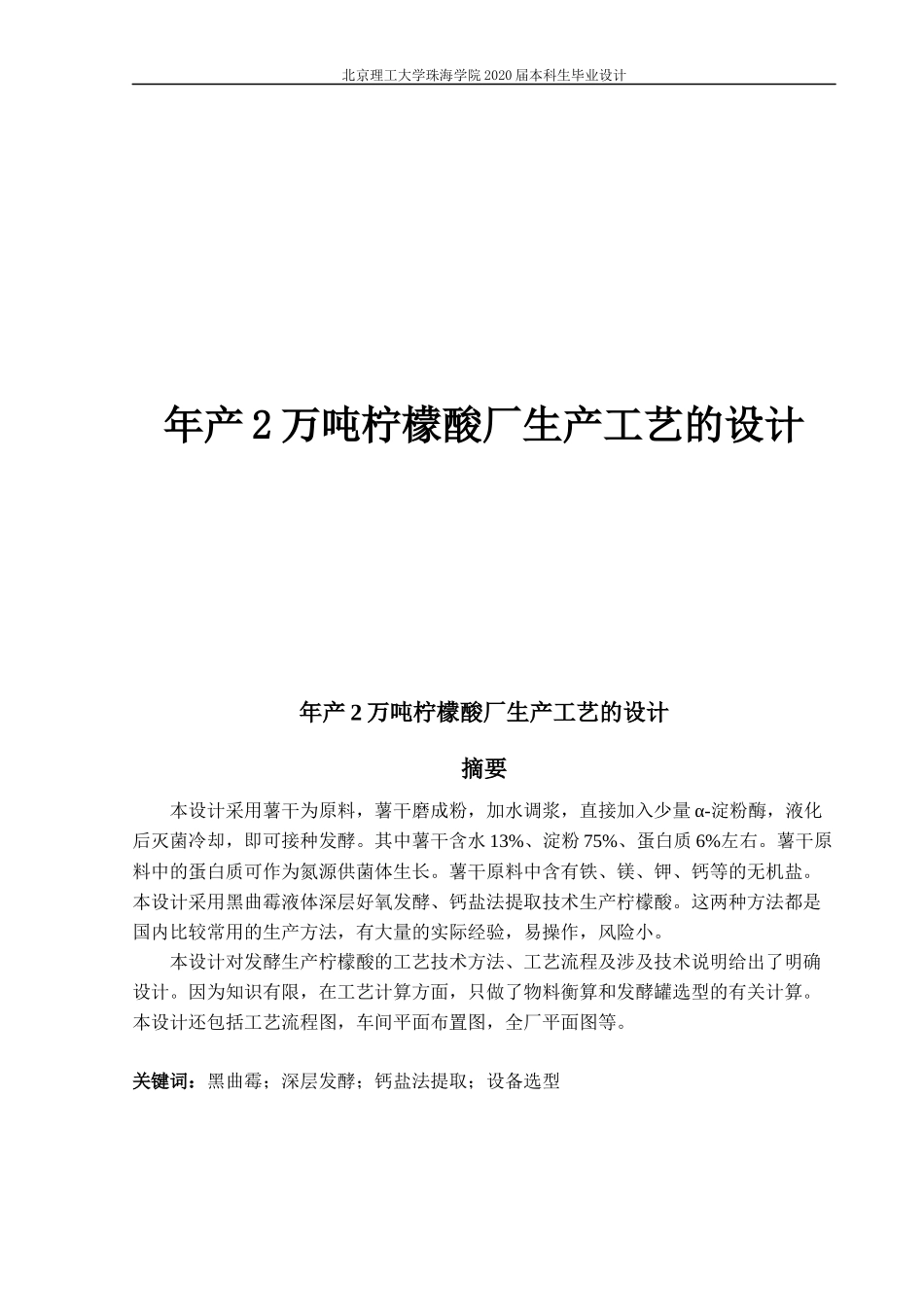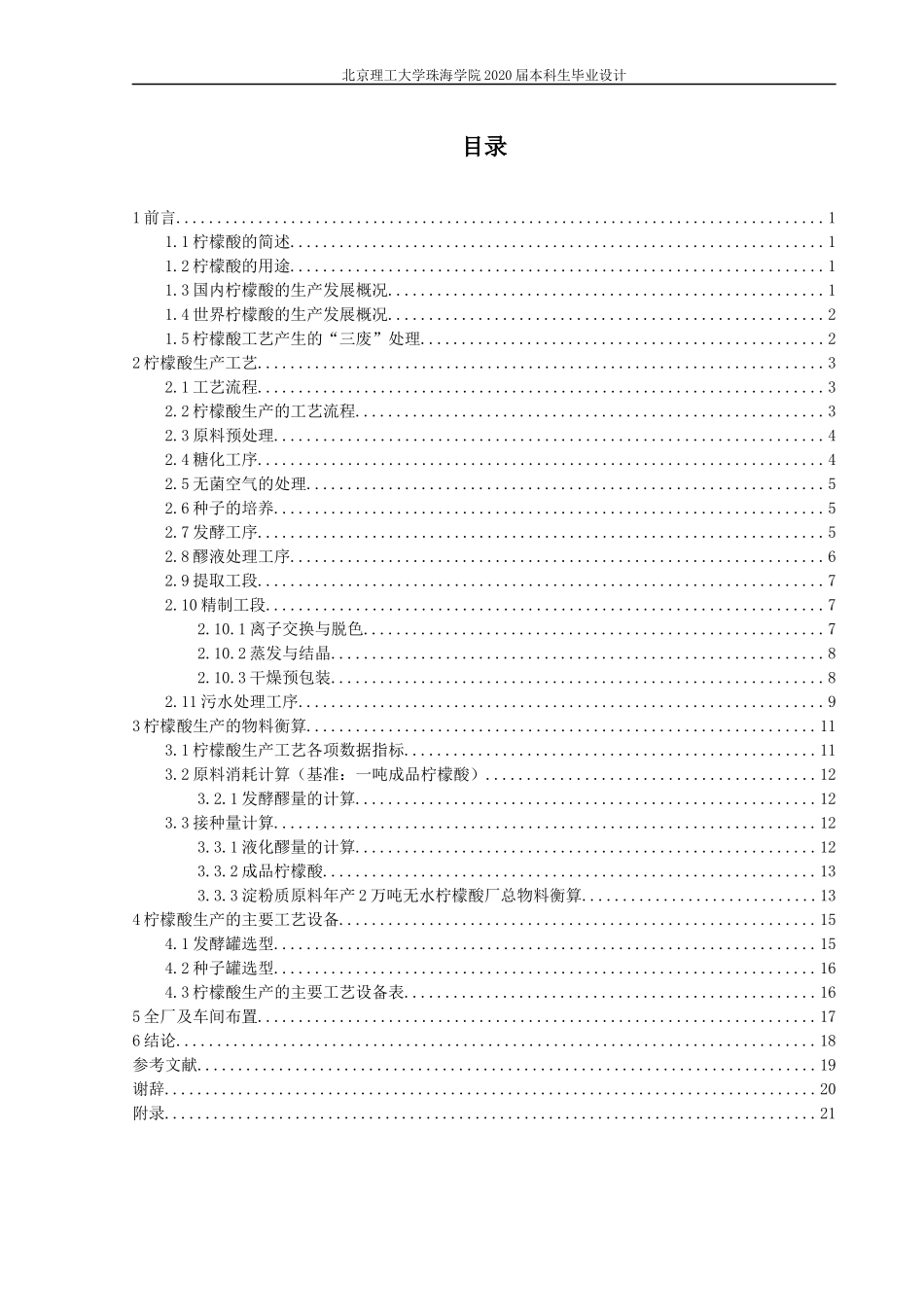北京理工大学珠海学院 2020 届本科生毕业设计年产 2 万吨柠檬酸厂生产工艺的设计年产 2 万吨柠檬酸厂生产工艺的设计摘要本设计采用薯干为原料,薯干磨成粉,加水调浆,直接加入少量 α-淀粉酶,液化后灭菌冷却,即可接种发酵。其中薯干含水 13%、淀粉 75%、蛋白质 6%左右。薯干原料中的蛋白质可作为氮源供菌体生长。薯干原料中含有铁、镁、钾、钙等的无机盐。本设计采用黑曲霉液体深层好氧发酵、钙盐法提取技术生产柠檬酸。这两种方法都是国内比较常用的生产方法,有大量的实际经验,易操作,风险小。本设计对发酵生产柠檬酸的工艺技术方法、工艺流程及涉及技术说明给出了明确设计。因为知识有限,在工艺计算方面,只做了物料衡算和发酵罐选型的有关计算。本设计还包括工艺流程图,车间平面布置图,全厂平面图等。 关键词:黑曲霉;深层发酵;钙盐法提取;设备选型北京理工大学珠海学院课程论文annual output of 20000 tons citric acid factory Production process designAbstractIn this design, cassava is used as raw material. The dried tapioca is ground into powder, mixed with water, added with a small amount of α -amylase directly, sterilized and cooled after liquefaction, and then inoculated for fermentation. The dry cassava contains 13% water, 75% starch and about 6% protein. The protein in cassava dry material can be used as nitrogen source for thallus growth. Cassava dried raw materials contain inorganic salts of iron, magnesium, potassium, calcium, etc. Citric acid was produced by submerged aerobic fermentation of Aspergillus niger and calcium salt extraction. These two methods are commonly used production methods in China. They have a lot of practical experience, are easy to operate and have little risk.This design gives a clear design for the technological method, technological process and related technical description of citric acid production by fermentation. Due to limited knowledge, only the material balance calculation and the calculation of fermente...


